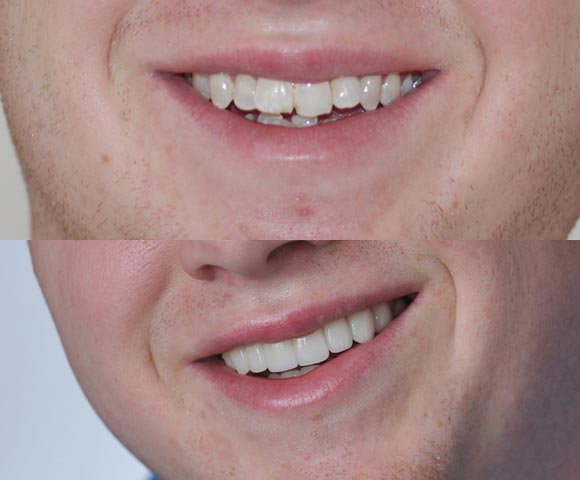If the decay reaches the nerve, root canal treatment is performed to remove the nerve and fill it with medicine. Root canal therapy removes the tooth structure and nerves that have been infected with bacteria using instruments called reamers and files and treats and prevents disease of the root of the tooth.
If the decayed tooth has progressed to the pulp or the root has a disease, removing the nerve in the root canal is necessary. After the nerve is removed, the root canal is disinfected and filled with medicine to prevent any renewed infection inside the tooth.
Root canal-treated teeth are more susceptible to root fracture than natural teeth because root canal treatment stops toothaches and decay by removing the infected nerves and blood vessels from the affected tooth. When a root fracture happens, dentists usually extract the fractured tooth.
After the tooth extraction, or if you have a badly infected or damaged tooth that standard dental treatment cannot restore, your dentist recommends an implant, an artificial root that goes into your bone.

What could happen if you leave the hopeless tooth but have no symptoms in your mouth? If you do not have pain, you can most likely use the tooth, but the tooth probably has a chronic infection or problems. If you leave it in your mouth, the condition could cause bone loss around the tooth and gradually get bigger.
Bone loss around the hopeless tooth will worsen and affect the adjacent teeth.
When you finally decide to have the treatment done, there will be no bone, and it gets very difficult or impossible to augment bone in the area. So not only does it get challenging to place implants, but you could also lose the adjacent teeth.
So, when we diagnose it as a non-savable tooth, we must take it out as soon as possible. Especially when you have an infection, to avoid more bone loss and protect adjacent teeth.
After Extraction, You Have a Couple of Options.
1. No treatment: What happens if you don't replace a missing tooth?

We recommend appropriate treatment after extraction because the other teeth will start to shift, and your occlusion (bite) will collapse. However, the treatment gets more complicated once this happens, meaning more time and cost.
When it is the very back tooth(3rd Molar), no treatment after extraction is more realistic because there will be no shifting of other teeth. Don't wait to replace a missing tooth.
2. Removable Partial Denture: Cheapest tooth replacement does not offer comfortable chewing.

A removable partial denture is a next less expensive option. However, it is more challenging to eat with a partial denture than with no tooth most of the time. And no matter how careful you chew, partial dentures move and slowly extract the teeth that have a clasp over years of use.
3. Bridge: Most affordable tooth replacement

On the other hand, implants restore everything from the root to the tooth's crown and never the cavity. To get implants, we need to perform surgery. However, it is much less invasive than extractions. To make implant placement successful, we need to be less intrusive or very kind to the bone when placing implants. We must push the root against the bone to loosen it and remove the tooth. So it is very invasive to the bone.
If we apply too much pressure or heat, the implant will not integrate with the bone, so we must be cautious and gentle to the bone when placing the implants. Thus, after surgery, there would be much less swelling or pain than an extraction. Yes, it is the most expensive option, and the treatment takes longer. However, most insurances pay for implant crowns, and some even pay for implant surgery, so the cost difference between bridges and implants is not as much anymore. By the way, do you know why more and more insurance companies started to pay for implants?
If you choose implants over bridges, insurance companies pay much less over time. Insurance companies need to pay more if you decide on bridges because of more re-treatments. Insurance companies have all the statistics and data that last longer. And we agree from our past 30 years of experience that implants last much longer.
So, How Much Does a Dental Implant Cost for One Tooth?
The average dental implant cost is $1800-$3500, but this is only for implant placement. On top of this, you will need abutments that go over the implants to support the crown, and of course, you need crowns on the implants.
If you need an extraction, there will be another cost and bone augmentation. You can go online to find dentists that offer a much lesser fee, but as you can imagine, it is not a good idea most of the time. Recently more and more insurance companies have paid for implants. Recently more and more insurance companies have paid for implants. Also, in my office, there is a no-interest option from CareCredit.
Related Articles
Outward Teeth Inclination
Sticking out front teeth or Flared teeth repair without wearing braces.



